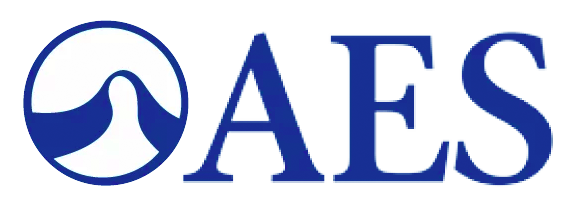AES Leaders in Occlusion, TMD, Comprehensive Oral Care
69th Annual Scientific Meeting
Clinical Excellence through Interdisciplinary Dentistry
February 21st – 22nd, 2024 – Downtown Marriott Michigan Avenue Chicago, IL
Thank you for a great meeting!
AES Leaders in Occlusion, TMD, Comprehensive Oral Care
69th Annual Scientific Meeting
Clinical Excellence through Interdisciplinary Dentistry
February 21st – 22nd, 2024 – Downtown Marriott Michigan Avenue Chicago, IL
Thank You for Attending!
Featured Presenters
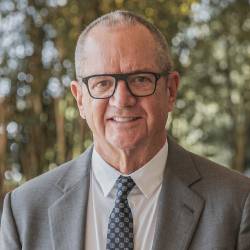 Frank Spear, DDS, MSD
Frank Spear, DDS, MSD
Thursday – 3:45 pm – 5:00 pm
Occlusion – TMD from the Prosthodontist’s Perspective
 John Kois, DDS, MSD,
John Kois, DDS, MSD,
Thursday – 2:00 pm – 3:15 pm
Digital Occlusion: What Works and What Doesn’t
Wednesday, February 21, 2024
J. William Robbins, DDS, MS
James F. Otten, DDS
8:30 am – 9:30 am
A Global View of Diagnosis and Treatment Planning
What differentiates a restorative case from a comprehensive case from an interdisciplinary case? This simple question is an illustration of how dedicated practitioners struggle to organize the morass of information necessary to treat a complicated patient.
Many great minds in dentistry, throughout the years, have proposed different philosophies in their approach to treatment planning. However, often the variable that is lacking is a specific diagnosis, based on an understandable, implementable system. Making a diagnosis or diagnoses is key to developing an organized and sequential treatment plan.
The Global Diagnosis system simplifies the complex and allows the practitioner to answer key questions that guide them through the process of making a diagnosis(es). Once the diagnoses are made, the treatment plan is straightforward, since there are only a limited number of treatment options for each diagnosis. As we are faced with the challenges of treating the Interdisciplinary Restorative patient and/or the foundational overlay of TM Joint and airway problems, the Global Diagnosis system provides an understandable pathway to success.
Learning objectives:
At the completion of the lecture, that participate will be able to:
1. Differentiate between the different types of cases with which they are faced
2. Understand the Questions that lead them through the diagnostic process
3. Understand the Global Diagnoses and the treatment options associated with each of them
J. William Robbins, D.D.S., M.A., maintains a full-time private practice and is Clinical Professor in the Department of Comprehensive Dentistry at the University of Texas Health Science Center at San Antonio Dental School. He graduated from the University of Tennessee Dental School in l973. He completed a rotating internship at the Veterans Administration Hospital in Leavenworth, Kansas and a 2-year General Practice Residency at the V. A. Hospital in San Diego, California. Dr. Robbins has published over 80 articles, abstracts, and chapters on a wide range of dental subjects and has lectured in the United States, Canada, Mexico, South America, Europe, Middle East, China, and Africa. He coauthored a textbook, Fundamentals of Operative Dentistry – A Contemporary Approach, which is published by Quintessence, and is in its 4th edition. He recently co-authored a new textbook,
Global Diagnosis – A New Vision of Dental Diagnosis and Treatment Planning, which is also published by Quintessence. He has won several awards including the Presidential Teaching Award at the University of Texas Health Science Center, the 2002 Texas Dentist of the Year Award, the 2003 Honorary Thaddeus V. Weclew Fellowship Award from the Academy of General Dentistry, the 2010 Saul Schluger Award given by the Seattle Study Club, the Southwest Academy of Restorative Dentistry 2015 President’s Award, and the 2016 Academy of Operative Dentistry Award of Excellence. He is a diplomate of the American Board of General Dentistry. He is past president of the American Board of General Dentistry, the Academy of Operative Dentistry, the Southwest Academy of Restorative Dentistry, and the American Academy of Restorative Dentistry.
Dr James Otten is an Integrative Restorative Dentist who practiced in Lawrence KS focusing on complex Occlusal and Restorative problems. He obtained his DDS degree from the University of Missouri-Kansas City School of Dentistry in 1981 and completed his residency in General Practice and Hospital Dentistry at the VA Medical Center in Leavenworth, Kansas. Post-graduate, he completed the curricula in Advanced Diagnosis, Management and Treatment of TMJ Disorders at Piper Education and Research Center, as well as the Center for Advanced Dental Studies at the Dawson Center and the Pankey Institute.
Dr Otten has served as Associate Professor of Prosthodontics at the UMKC School of Dentistry, is a Fellow of the American College of Dentists, is a former Lead Visiting Faculty at the Pankey Institute, has served as the Pankey Institute Provost, Curriculum Development Committee and was a member of their Board of directors and Advisors. He is a member of the Visiting Faculty for Spear Education and has mentored doctors in the Facially Generated Treatment Planning, Occlusion in Clinical Practice and Advanced Occlusion workshops.
Currently Dr Otten is Co-Director for Global Diagnosis Education a hybrid study and mentoring consortium that focuses on the passionate practitioner’s ability to evaluate, diagnose, and develop an orderly sequence and implement it for both fundamental and complex interdisciplinary care.
In addition to the ACD Fellowship, Dr Otten is a member of ADA, the American Equilibration Society and American Academy of Restorative Dentistry as well as serving on the Executive Committee for the University of Kansas Center for Research. Dr Otten is a member of the Medical Staff of Lawrence Memorial Hospital Department of Surgery.
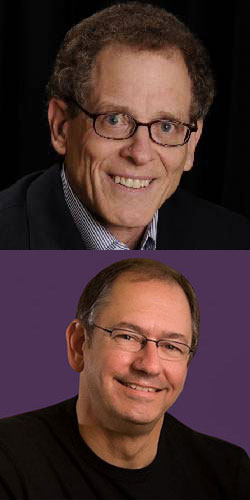 J. William Robbins, DDS, MS
J. William Robbins, DDS, MS
James F. Otten, DDS
8:30 am – 9:30 am
A Global View of Diagnosis and Treatment Planning
What differentiates a restorative case from a comprehensive case from an interdisciplinary case? This simple question is an illustration of how dedicated practitioners struggle to organize the morass of information necessary to treat a complicated patient.
Many great minds in dentistry, throughout the years, have proposed different philosophies in their approach to treatment planning. However, often the variable that is lacking is a specific diagnosis, based on an understandable, implementable system. Making a diagnosis or diagnoses is key to developing an organized and sequential treatment plan.
The Global Diagnosis system simplifies the complex and allows the practitioner to answer key questions that guide them through the process of making a diagnosis(es). Once the diagnoses are made, the treatment plan is straightforward, since there are only a limited number of treatment options for each diagnosis. As we are faced with the challenges of treating the Interdisciplinary Restorative patient and/or the foundational overlay of TM Joint and airway problems, the Global Diagnosis system provides an understandable pathway to success.
Learning objectives:
At the completion of the lecture, that participate will be able to:
1. Differentiate between the different types of cases with which they are faced
2. Understand the Questions that lead them through the diagnostic process
3. Understand the Global Diagnoses and the treatment options associated with each of them
J. William Robbins, D.D.S., M.A., maintains a full-time private practice and is Clinical Professor in the Department of Comprehensive Dentistry at the University of Texas Health Science Center at San Antonio Dental School. He graduated from the University of Tennessee Dental School in l973. He completed a rotating internship at the Veterans Administration Hospital in Leavenworth, Kansas and a 2-year General Practice Residency at the V. A. Hospital in San Diego, California. Dr. Robbins has published over 80 articles, abstracts, and chapters on a wide range of dental subjects and has lectured in the United States, Canada, Mexico, South America, Europe, Middle East, China, and Africa. He coauthored a textbook, Fundamentals of Operative Dentistry – A Contemporary Approach, which is published by Quintessence, and is in its 4th edition. He recently co-authored a new textbook,
Global Diagnosis – A New Vision of Dental Diagnosis and Treatment Planning, which is also published by Quintessence. He has won several awards including the Presidential Teaching Award at the University of Texas Health Science Center, the 2002 Texas Dentist of the Year Award, the 2003 Honorary Thaddeus V. Weclew Fellowship Award from the Academy of General Dentistry, the 2010 Saul Schluger Award given by the Seattle Study Club, the Southwest Academy of Restorative Dentistry 2015 President’s Award, and the 2016 Academy of Operative Dentistry Award of Excellence. He is a diplomate of the American Board of General Dentistry. He is past president of the American Board of General Dentistry, the Academy of Operative Dentistry, the Southwest Academy of Restorative Dentistry, and the American Academy of Restorative Dentistry.
Dr James Otten is an Integrative Restorative Dentist who practiced in Lawrence KS focusing on complex Occlusal and Restorative problems. He obtained his DDS degree from the University of Missouri-Kansas City School of Dentistry in 1981 and completed his residency in General Practice and Hospital Dentistry at the VA Medical Center in Leavenworth, Kansas. Post-graduate, he completed the curricula in Advanced Diagnosis, Management and Treatment of TMJ Disorders at Piper Education and Research Center, as well as the Center for Advanced Dental Studies at the Dawson Center and the Pankey Institute.
Dr Otten has served as Associate Professor of Prosthodontics at the UMKC School of Dentistry, is a Fellow of the American College of Dentists, is a former Lead Visiting Faculty at the Pankey Institute, has served as the Pankey Institute Provost, Curriculum Development Committee and was a member of their Board of directors and Advisors. He is a member of the Visiting Faculty for Spear Education and has mentored doctors in the Facially Generated Treatment Planning, Occlusion in Clinical Practice and Advanced Occlusion workshops.
Currently Dr Otten is Co-Director for Global Diagnosis Education a hybrid study and mentoring consortium that focuses on the passionate practitioner’s ability to evaluate, diagnose, and develop an orderly sequence and implement it for both fundamental and complex interdisciplinary care.
In addition to the ACD Fellowship, Dr Otten is a member of ADA, the American Equilibration Society and American Academy of Restorative Dentistry as well as serving on the Executive Committee for the University of Kansas Center for Research. Dr Otten is a member of the Medical Staff of Lawrence Memorial Hospital Department of Surgery.
 Seth Atkins, DDS
Seth Atkins, DDS
9:30 am – 10:15 am
Diagnostic Records in the Digital Practice
Increases in technology have affected all aspects of dental practice. Diagnostic records are no exception. Today, the virtual record allows the clinician to capture patient anatomy digitally. Not only are these records more easily adapted than their analog counterparts, but they also have the potential to add new utility. This presentation will examine different applications of the digital patient record with the end goal being enhanced diagnostic capabilities, increased clinical efficiency and streamlined chairside workflows.
Learning Objectives:
– Better understand how layering of digital records aids in diagnostic capabilities
– Examine the potential of virtual articulation to more accurately replicate patient anatomy
– Introduce new workflows utilizing rapid prototyping through additive manufacturing
 Seth Atkins, DDS
Seth Atkins, DDS
9:30 am – 10:15 am
Diagnostic Records in the Digital Practice
Increases in technology have affected all aspects of dental practice. Diagnostic records are no exception. Today, the virtual record allows the clinician to capture patient anatomy digitally. Not only are these records more easily adapted than their analog counterparts, but they also have the potential to add new utility. This presentation will examine different applications of the digital patient record with the end goal being enhanced diagnostic capabilities, increased clinical efficiency and streamlined chairside workflows.
Learning Objectives:
– Better understand how layering of digital records aids in diagnostic capabilities
– Examine the potential of virtual articulation to more accurately replicate patient anatomy
– Introduce new workflows utilizing rapid prototyping through additive manufacturing
Tom Predey, MD
10:45 am – 11:15 am
TM Joint Imaging from an Orthopedic Perspective
Dr. Thomas A. Predey is a radiologist in Hoffman Estates, Illinois. He received his medical degree from Loyola University Chicago Stritch School of Medicine and has been in practice for more than 20 years.
 Tom Predey, MD
Tom Predey, MD
10:45 am – 11:15 am
TM Joint Imaging from an Orthopedic Perspective
Dr. Thomas A. Predey is a radiologist in Hoffman Estates, Illinois. He received his medical degree from Loyola University Chicago Stritch School of Medicine and has been in practice for more than 20 years.
Rex Lee
11:15 am – 12:15 pm
Adopting A Top/Down Security and Privacy Strategy
Session Overview
Today smartphones, tablet PCs, connected products, IoT/IIoT devices, and PCs are supported by intrusive operating systems and applications posing massive security and privacy threats to end users, including the end user’s employer.
Many end users of popular smartphone and PC apps are unaware of the fact that the app developers have adopted predatory surveillance and data mining business practices rooted in Surveillance Capitalism.
This means that the developers of popular operating systems and apps are collecting highly confidential business information aside from personal information from the app end user since the surveillance and data mining business practices are indiscriminate.
Additionally, nation-state hackers and bad actors are launching numerous attacks on networks, including critical infrastructure, by way of popular operating systems such as Windows and apps that are distributed through popular app stores that include Google Play.
The session will expose numerous threats associated with connected products such as smartphones and PCs that are supported by the Android OS, Apple iOS, and Microsoft Windows.
The session will provide an overview of security, privacy, and safety threats posed by intrusive operating system and app developers on a global basis from a tech, telecom, and cybersecurity industry professional’s perspective.
The session will cover how popular smartphone and PC applications are purposely developed to enable the operating system and app developer to conduct audio, video, and physical surveillance on the end user while data mining highly confidential personal and business information from the end user for financial gain.
The session will expose how business and medical professionals are inadvertently exposing highly confidential personal, business, medical, legal, and employment information to unauthorized third-party app developers from around the world.
The session will conclude with solutions and best practices regarding the adoption of a top/down security and privacy strategy.
• Security and Privacy Advisor to Major Corporations, Senior Executives, Government Agencies (DHS & NSA), and Lawmakers (Democrats, Republicans, & Independents)
• Board of Advisor for BlackOps Partners (Washington DC), TechTalk Summits, & Techno Security and Digital Forensics
• Former Senior Executive for Carnegie Technologies and Space Data Corporation
• Over 35 Years of Tech, Telecom, and Cybersecurity Industry Experience
• Professional Speaker- Tradeshows, Conferences, and Private Speaking Events
• Executive Producer, Tech Journalist, & Tech/Security Subject Matter Expert- Media, News Organizations, CBS/Kens5 TV, Fox News (Radio), PODTV, San Antonio Business Journal, and CyberTalk TV on Roku/Amazon Fire TV
• Publications Include Epoch Times Newspaper, MissionCritical Communications Magazine, Epoch TV, IBMTV, and PODTV
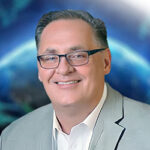
Rex Lee
11:15 am – 12:15 pm
Adopting A Top/Down Security and Privacy Strategy
Session Overview
Today smartphones, tablet PCs, connected products, IoT/IIoT devices, and PCs are supported by intrusive operating systems and applications posing massive security and privacy threats to end users, including the end user’s employer.
Many end users of popular smartphone and PC apps are unaware of the fact that the app developers have adopted predatory surveillance and data mining business practices rooted in Surveillance Capitalism.
This means that the developers of popular operating systems and apps are collecting highly confidential business information aside from personal information from the app end user since the surveillance and data mining business practices are indiscriminate.
Additionally, nation-state hackers and bad actors are launching numerous attacks on networks, including critical infrastructure, by way of popular operating systems such as Windows and apps that are distributed through popular app stores that include Google Play.
The session will expose numerous threats associated with connected products such as smartphones and PCs that are supported by the Android OS, Apple iOS, and Microsoft Windows.
The session will provide an overview of security, privacy, and safety threats posed by intrusive operating system and app developers on a global basis from a tech, telecom, and cybersecurity industry professional’s perspective.
The session will cover how popular smartphone and PC applications are purposely developed to enable the operating system and app developer to conduct audio, video, and physical surveillance on the end user while data mining highly confidential personal and business information from the end user for financial gain.
The session will expose how business and medical professionals are inadvertently exposing highly confidential personal, business, medical, legal, and employment information to unauthorized third-party app developers from around the world.
The session will conclude with solutions and best practices regarding the adoption of a top/down security and privacy strategy.
• Security and Privacy Advisor to Major Corporations, Senior Executives, Government Agencies (DHS & NSA), and Lawmakers (Democrats, Republicans, & Independents)
• Board of Advisor for BlackOps Partners (Washington DC), TechTalk Summits, & Techno Security and Digital Forensics
• Former Senior Executive for Carnegie Technologies and Space Data Corporation
• Over 35 Years of Tech, Telecom, and Cybersecurity Industry Experience
• Professional Speaker- Tradeshows, Conferences, and Private Speaking Events
• Executive Producer, Tech Journalist, & Tech/Security Subject Matter Expert- Media, News Organizations, CBS/Kens5 TV, Fox News (Radio), PODTV, San Antonio Business Journal, and CyberTalk TV on Roku/Amazon Fire TV
• Publications Include Epoch Times Newspaper, MissionCritical Communications Magazine, Epoch TV, IBMTV, and PODTV
Michael Gunson, DDS, MD
1:30 pm – 2:15 pm
Gnathology and the Lips: It’s All Connected
Dr C.E. Stuart wrote: “Gnathology is the study of the biological mechanisms that create the functional movements in mastication, speech, deglutition and facial expression.” For the last century, we have expended great effort in gnathology to understand dental anatomy, occlusal contact schemes and temporomandibular joint anatomy and function. Yet, during that time, the soft tissues of the face and especially the lips have been ignored. The lips are functionally key to proper jaw and dental function. To be functionally and esthetically successful in our treatments we must understand lip anatomy and its role in TMJ, dental and facial health.
Learning Objectives:
Understand how the lips are integral to the purposes of the face, namely breathing, eating and communicating
Understand intrinsic and supportive lip anatomy and how it influences esthetics and proper gnathological function
Understand the effect our dental and cosmetic treatments have over lip esthetics and overall facial function
Michael Gunson DDS, MD is a board-certified oral and maxillofacial surgeon and practices in Santa Barbara, CA. He graduated from UCLA Dental School and Medical School and received his specialty certificate in oral and maxillofacial surgery from UCLA. Dr. Gunson partnered with Dr. G. William Arnett at the Center for Corrective Jaw Surgery in Santa Barbara, California. Their surgical practice has always been limited to diagnosing and treating facial growth problems by performing corrective jaw surgeries.
Dr. Gunson is passionate about facial esthetics and facial function. He believes they go hand in hand. He diagnoses and treats patients with facial and dental esthetic concerns, difficulty with chewing and speech, and sleep apnea. Dr. Gunson’s orthognathic and esthetic surgical techniques provide accurate, beautiful, and functional results that improve patient health and satisfaction.
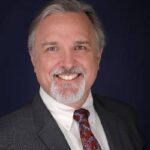 Michael Gunson, DDS, MD
Michael Gunson, DDS, MD
1:30 pm – 2:15 pm
Gnathology and the Lips: It’s All Connected
Dr C.E. Stuart wrote: “Gnathology is the study of the biological mechanisms that create the functional movements in mastication, speech, deglutition and facial expression.” For the last century, we have expended great effort in gnathology to understand dental anatomy, occlusal contact schemes and temporomandibular joint anatomy and function. Yet, during that time, the soft tissues of the face and especially the lips have been ignored. The lips are functionally key to proper jaw and dental function. To be functionally and esthetically successful in our treatments we must understand lip anatomy and its role in TMJ, dental and facial health.
Learning Objectives:
Understand how the lips are integral to the purposes of the face, namely breathing, eating and communicating
Understand intrinsic and supportive lip anatomy and how it influences esthetics and proper gnathological function
Understand the effect our dental and cosmetic treatments have over lip esthetics and overall facial function
Michael Gunson DDS, MD is a board-certified oral and maxillofacial surgeon and practices in Santa Barbara, CA. He graduated from UCLA Dental School and Medical School and received his specialty certificate in oral and maxillofacial surgery from UCLA. Dr. Gunson partnered with Dr. G. William Arnett at the Center for Corrective Jaw Surgery in Santa Barbara, California. Their surgical practice has always been limited to diagnosing and treating facial growth problems by performing corrective jaw surgeries.
Dr. Gunson is passionate about facial esthetics and facial function. He believes they go hand in hand. He diagnoses and treats patients with facial and dental esthetic concerns, difficulty with chewing and speech, and sleep apnea. Dr. Gunson’s orthognathic and esthetic surgical techniques provide accurate, beautiful, and functional results that improve patient health and satisfaction.
Reza Movahed, DMD
2:15 pm – 3:00 pm
Indications for Temporomandibular Joint Replacement in Ortho-Surgical Cases
Synopsis:
Indications for application of total temporomandibular joint replacement (TJR) and maxillomandibular advancement (MMA) are multifaceted and vary from case to case, and it is imperative for the clinician to understand all the contemporary approaches and literature when considering the appropriate treatment for airway disorders and obstructive sleep apnea (OSA). The proper diagnosis must be supported by the necessary studies, including TMJ MRI, CBCT, polysomnography, and clinical findings. The correct option and timing of surgery is paramount to the long-term success of each case. Tailored treatment planning will be discussed in conjunction with cutting edge digital workflow to increase success and predictability of the surgical and stable orthodontic outcomes.
Learning Objectives:
• Understanding various TMJ pathologies requiring TJR.
• Knowing when to use TJR to ensure the most stable biomechanical outcome for otho-surgical cases.
• Reviewing available methodologies including clinical assessment, CT scan, and MRI for utilizing TJR as part of the ortho-surgical treatment.
• Utilizing virtual surgical planning/digital workflow for the most accurate outcomes when performing combined TJR and orthognathic surgical case
Dr. Reza Movahed is an Oral and Maxillofacial Surgeon in private practice serving the greater St. Louis region, San Francisco Bay area, and patients from across the country, Movahed OMS. His private practice has concentrated in treating patients with dentofacial deformities and obstructive sleep apnea requiring corrective jaw surgery, treatment for temporomandibular joint surgery, and combined orthognathic and TMJ surgery.
After receiving his Doctorate in Dental Medicine from the University of Medicine and Dentistry of New Jersey, he completed his residency program at Nova Southeastern University, and a fellowship specializing in TMJ and corrective jaw surgery to manage dentofacial deformities.
Dr. Movahed is a Clinical Assistant Professor at the Saint Louis University, Department of Orthodontics where he lectures on surgical orthodontics and takes part in multidisciplinary ortho-surgical cases with residents. He has written multiple chapters for books concentrating in OSA, joint and corrective jaw surgery, numerous scientific articles, and is a coauthor of a textbook which focuses on treatments for sleep apnea. In his spare time, he is a painter and musician.
 Reza Movahed, DMD
Reza Movahed, DMD
2:15 pm – 3:00 pm
Indications for Temporomandibular Joint Replacement in Ortho-Surgical Cases
Synopsis:
Indications for application of total temporomandibular joint replacement (TJR) and maxillomandibular advancement (MMA) are multifaceted and vary from case to case, and it is imperative for the clinician to understand all the contemporary approaches and literature when considering the appropriate treatment for airway disorders and obstructive sleep apnea (OSA). The proper diagnosis must be supported by the necessary studies, including TMJ MRI, CBCT, polysomnography, and clinical findings. The correct option and timing of surgery is paramount to the long-term success of each case. Tailored treatment planning will be discussed in conjunction with cutting edge digital workflow to increase success and predictability of the surgical and stable orthodontic outcomes.
Learning Objectives:
• Understanding various TMJ pathologies requiring TJR.
• Knowing when to use TJR to ensure the most stable biomechanical outcome for otho-surgical cases.
• Reviewing available methodologies including clinical assessment, CT scan, and MRI for utilizing TJR as part of the ortho-surgical treatment.
• Utilizing virtual surgical planning/digital workflow for the most accurate outcomes when performing combined TJR and orthognathic surgical case
Dr. Reza Movahed is an Oral and Maxillofacial Surgeon in private practice serving the greater St. Louis region, San Francisco Bay area, and patients from across the country, Movahed OMS. His private practice has concentrated in treating patients with dentofacial deformities and obstructive sleep apnea requiring corrective jaw surgery, treatment for temporomandibular joint surgery, and combined orthognathic and TMJ surgery.
After receiving his Doctorate in Dental Medicine from the University of Medicine and Dentistry of New Jersey, he completed his residency program at Nova Southeastern University, and a fellowship specializing in TMJ and corrective jaw surgery to manage dentofacial deformities.
Dr. Movahed is a Clinical Assistant Professor at the Saint Louis University, Department of Orthodontics where he lectures on surgical orthodontics and takes part in multidisciplinary ortho-surgical cases with residents. He has written multiple chapters for books concentrating in OSA, joint and corrective jaw surgery, numerous scientific articles, and is a coauthor of a textbook which focuses on treatments for sleep apnea. In his spare time, he is a painter and musician.
Brian Shah, DDS, MD
3:30 pm – 4:15 pm
Face First Treatment of the TM Joints
Dr. Brian S. Shah was born in Chicago, Illinois and grew up outside of Cleveland, Ohio. He did his undergraduate work at Miami University and his dental school at Ohio State. Dr. Shah continued his studies and received his medical degree from Harvard Medical School. His general surgery and oral and maxillofacial surgery training was done at the Harvard teaching hospitals. This is where he developed a strong interest and passion for craniofacial surgery. As such, the form and function of the maxillofacial skeleton are central to his diagnostic and treatment philosophies. Dr. Shah owned a private practice in the Lincoln Park neighborhood of Chicago while teaching in academic medicine at Yale. Shortly there after, Dr. Shah was introduced to Dr. Mark Piper and has had the pleasure of taking over Dr. Piper’s practice after his retirement. Dr. Shah’s practice is limited to facial reconstruction and temporomandibular joint surgery.
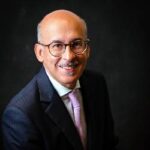 Brian Shah, DDS, MD
Brian Shah, DDS, MD
3:30 pm – 4:15 pm
Face First Treatment of the TM Joints
Dr. Brian S. Shah was born in Chicago, Illinois and grew up outside of Cleveland, Ohio. He did his undergraduate work at Miami University and his dental school at Ohio State. Dr. Shah continued his studies and received his medical degree from Harvard Medical School. His general surgery and oral and maxillofacial surgery training was done at the Harvard teaching hospitals. This is where he developed a strong interest and passion for craniofacial surgery. As such, the form and function of the maxillofacial skeleton are central to his diagnostic and treatment philosophies. Dr. Shah owned a private practice in the Lincoln Park neighborhood of Chicago while teaching in academic medicine at Yale. Shortly there after, Dr. Shah was introduced to Dr. Mark Piper and has had the pleasure of taking over Dr. Piper’s practice after his retirement. Dr. Shah’s practice is limited to facial reconstruction and temporomandibular joint surgery.
Thursday, February 22, 2024
Domingo Martin, DDS, MD
8:15 am – 9:15 am
Occlusion – TMD from the Orthodontist’s Perspective
Synopsis:
Research today almost totally disregards occlusion as an etiological factor in TMD and there is no doubt in my mind that occlusion must be taken into account. However as the philosopher Karl Popper in his work “Knowledge and the Shaping of Reality”, says ” I regard scientific knowledge as the best and most important kind of knowledge we have, though I am far from regarding it as the only one”, as a clinician I totally agree with Popper. After treating TMD patients for the last 25 years with a high level of success I do not understand how the literature can come to this conclusion and relegate occlusion as a minor factor in TMD. Maybe there is an answer,in a recent article Dr. Okeson stated the following regarding the literature and the studies relating TMD and occlusion, “the literature finds a minor relationship between occlusal factors and TMD. It should be noted,however,that these studies report on the static relationship of the teeth as well as the contact pattern of the teeth during various eccentric movements.
This represents the traditional approach to evaluating occlusion. Perhaps these static relationships can provide only limited insight into the role of occlusion and TMD “. So when we read what Dr Okeson says we can now begin to think that maybe there is a relationship and if you stop and think about it without any bias and with an open mind, it is difficult to imagine a specialty that routinely and significantly changes a patient’s occlusal condition and would not have a powerful affect on the masticatory structures and their functions. If we take this to other dental specialists, most prosthodontists would be greatly concerned with developing a permanent occlusal position with no regard to joint position and even Dr. Jeff Okeson makes the following statement “the concept that orthodontic treatment has nothing to do with TMD is like stating that moving teeth anywhere will not influence how the patient functions. Certainly that is not the case in prosthodontics !!!
As orthodontists we must achieve a musculoskeletal stable position and avoid posterior interferences that may lead to TMD. Posterior interferences can change the chewing pattern of our patients and after many years of experience I have come to the conclusion that “it’s all about chewing”. We know from Pullinger and Seligman that there are two factors that will determine whether an intracapsular disorder will develop: 1) the degree of orthopedic instability, and 2) the amount of loading. Interferences such as a “fulcrum” will be responsible for orthopedic instability and this alone will change the chewing patterns of our patients.
In my presentation I will stress the importance of orthopedic stability as an orthodontic treatment goal to achieve stable condylar position, vertical chewing patterns and prevent and resolve TMD
Bio:
B.A. University of Southern California.
M.D. University of Basque Country
D.D.S. University of Basque Country
M.S. in Orthodontics University of Valencia
Diploma For Functional Occlusion – Roth Williams Center 1991-1993 San Francisco California
Diploma Foundation for Bioesthetic Dentistry 2004-2006 Portland, Oregon
Active Member Angle Society of Europe
President of the Angle Society 2014-2016
Juan Carol Prize for Best Presentation at the S.E.D.O.(Spanish Society of Orthodontics) 1991
President of the S.E.D.O. Meeting (Spanish Society of Orthodontics) 2000
Diplomate of the European Society of Orthodontics (EBO) 2008
Director of FACE – Spain
Creator of FAS – FACE Aligner System
 Domingo Martin, DDS, MD
Domingo Martin, DDS, MD
8:15 am – 9:15 am
Occlusion – TMD from the Orthodontist’s Perspective
Synopsis:
Research today almost totally disregards occlusion as an etiological factor in TMD and there is no doubt in my mind that occlusion must be taken into account. However as the philosopher Karl Popper in his work “Knowledge and the Shaping of Reality”, says ” I regard scientific knowledge as the best and most important kind of knowledge we have, though I am far from regarding it as the only one”, as a clinician I totally agree with Popper. After treating TMD patients for the last 25 years with a high level of success I do not understand how the literature can come to this conclusion and relegate occlusion as a minor factor in TMD. Maybe there is an answer,in a recent article Dr. Okeson stated the following regarding the literature and the studies relating TMD and occlusion, “the literature finds a minor relationship between occlusal factors and TMD. It should be noted,however,that these studies report on the static relationship of the teeth as well as the contact pattern of the teeth during various eccentric movements.
This represents the traditional approach to evaluating occlusion. Perhaps these static relationships can provide only limited insight into the role of occlusion and TMD “. So when we read what Dr Okeson says we can now begin to think that maybe there is a relationship and if you stop and think about it without any bias and with an open mind, it is difficult to imagine a specialty that routinely and significantly changes a patient’s occlusal condition and would not have a powerful affect on the masticatory structures and their functions. If we take this to other dental specialists, most prosthodontists would be greatly concerned with developing a permanent occlusal position with no regard to joint position and even Dr. Jeff Okeson makes the following statement “the concept that orthodontic treatment has nothing to do with TMD is like stating that moving teeth anywhere will not influence how the patient functions. Certainly that is not the case in prosthodontics !!!
As orthodontists we must achieve a musculoskeletal stable position and avoid posterior interferences that may lead to TMD. Posterior interferences can change the chewing pattern of our patients and after many years of experience I have come to the conclusion that “it’s all about chewing”. We know from Pullinger and Seligman that there are two factors that will determine whether an intracapsular disorder will develop: 1) the degree of orthopedic instability, and 2) the amount of loading. Interferences such as a “fulcrum” will be responsible for orthopedic instability and this alone will change the chewing patterns of our patients.
In my presentation I will stress the importance of orthopedic stability as an orthodontic treatment goal to achieve stable condylar position, vertical chewing patterns and prevent and resolve TMD
Bio:
B.A. University of Southern California.
M.D. University of Basque Country
D.D.S. University of Basque Country
M.S. in Orthodontics University of Valencia
Diploma For Functional Occlusion – Roth Williams Center 1991-1993 San Francisco California
Diploma Foundation for Bioesthetic Dentistry 2004-2006 Portland, Oregon
Active Member Angle Society of Europe
President of the Angle Society 2014-2016
Juan Carol Prize for Best Presentation at the S.E.D.O.(Spanish Society of Orthodontics) 1991
President of the S.E.D.O. Meeting (Spanish Society of Orthodontics) 2000
Diplomate of the European Society of Orthodontics (EBO) 2008
Director of FACE – Spain
Creator of FAS – FACE Aligner System
George Mandelaris, DDS, MS
9:15 am – 10:15 am
Occlusion – TMD from the Periodontist’s Perspective
Dr. Mandelaris attended the University of Michigan from undergraduate through dental school. He completed a post-graduate residency program at the University of Louisville, School of Dentistry, where he obtained a certificate in the specialty of Periodontology as well as a Master of Science (M.S.) degree in Oral Biology. Dr. Mandelaris is a Diplomate of the American Board of Periodontology and a Fellow in both the American and International College of Dentists. He is a Clinical Assistant Professor in the Department of Graduate Periodontics at the University of Illinois, College of Dentistry (Chicago, IL) and an Adjunct Clinical Assistant Professor at the University of Michigan, Department of Periodontics and Oral Medicine (Ann Arbor, MI).
Dr Mandelaris is a two time recipient (2017 and 2021) of the American Academy of Periodontology’s (AAP) Clinical Research Award. A nationally recognized expert, he was appointed by the AAP to co-chair the first-ever Best Evidence Consensus Workshop on the use of CBCT Imaging in Periodontics as well as co-author the academy’s guidelines. In 2018, he was recognized with American Academy of Periodontology’s Special Citation Award. Dr. Mandelaris is the 2018 recipient of The Saul Schluger Memorial Award for Clinical Excellence in Diagnosis and Treatment Planning.
Dr. Mandelaris currently serves on the American Academy of Periodontology Board of Trustees and has served as a Past President of the Illinois Society of Periodontists. He is a key-opinion leader for several industry leaders and holds memberships in many professional organizations, including the American Academy of Periodontology, Academy of Osseointegration, American Academy of Restorative Dentistry and the American Society of Bone and Mineral Research. Dr. Mandelaris is in private practice in Oakbrook Terrace and Glenview, Illinois (USA) where he limits his practice to Periodontics, Dental Implant and Dentoalveolar Bone Surgery.
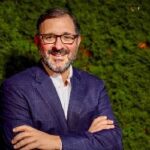 George Mandelaris, DDS, MS
George Mandelaris, DDS, MS
9:15 am – 10:15 am
Occlusion – TMD from the Periodontist’s Perspective
Dr. Mandelaris attended the University of Michigan from undergraduate through dental school. He completed a post-graduate residency program at the University of Louisville, School of Dentistry, where he obtained a certificate in the specialty of Periodontology as well as a Master of Science (M.S.) degree in Oral Biology. Dr. Mandelaris is a Diplomate of the American Board of Periodontology and a Fellow in both the American and International College of Dentists. He is a Clinical Assistant Professor in the Department of Graduate Periodontics at the University of Illinois, College of Dentistry (Chicago, IL) and an Adjunct Clinical Assistant Professor at the University of Michigan, Department of Periodontics and Oral Medicine (Ann Arbor, MI).
Dr Mandelaris is a two time recipient (2017 and 2021) of the American Academy of Periodontology’s (AAP) Clinical Research Award. A nationally recognized expert, he was appointed by the AAP to co-chair the first-ever Best Evidence Consensus Workshop on the use of CBCT Imaging in Periodontics as well as co-author the academy’s guidelines. In 2018, he was recognized with American Academy of Periodontology’s Special Citation Award. Dr. Mandelaris is the 2018 recipient of The Saul Schluger Memorial Award for Clinical Excellence in Diagnosis and Treatment Planning.
Dr. Mandelaris currently serves on the American Academy of Periodontology Board of Trustees and has served as a Past President of the Illinois Society of Periodontists. He is a key-opinion leader for several industry leaders and holds memberships in many professional organizations, including the American Academy of Periodontology, Academy of Osseointegration, American Academy of Restorative Dentistry and the American Society of Bone and Mineral Research. Dr. Mandelaris is in private practice in Oakbrook Terrace and Glenview, Illinois (USA) where he limits his practice to Periodontics, Dental Implant and Dentoalveolar Bone Surgery.
Lee Ann Brady, DMD,
Peter Lemieux, DMD,
Lynn Lipskis, DDS
10:45 am – 12:00 pm
Case Study: Three Perspectives on Your New Patient Monday Morning (Panel Discussion)
Your first hygiene patient next Monday is a 25-year-old female Class II patient who present with pain in the left jaw joint. She reports she had orthodontic treatment from ages 12-16 with headgear and her left joint started clicking when she was 13 years old.
CV Lynn O. Lipskis, D.D.S.
Education:
1981 graduate of Loyola University School of Dentistry (D.D.S.)
1981 established private general dental practice in St. Charles, IL
1982-1993 Associate Clinical Professor, Loyola University School of Dentistry
Member:
American Dental Assoc.; Illinois State Dental Society; Fox River Valley Dental Society; American Academy of Craniofacial Pain (AACP); American Academy of Dental Sleep Medicine (AADSM); Academy of Clinical Sleep Disorders Disciplines (ACSDD); Chicago Dental Society; SOTO; Illinois Sleep Society
Credentials:
Fellow: AACP
Diplomate: ABDSM; ABCP: ABCP Sleep
As a chronic pain sufferer, Dr. Lipskis was determined to find answers and embarked upon a 35+ year journey and over 3000 hours of post graduate continuing education in the areas of facial development; orthodontics; facial orthopedics; craniofacial pain; and sleep medicine .
She has studied extensively with Dr John Witzig, Dr Derek Mahony, and Dr Steven Olmos. Dr. Lipskis was a member of the inaugural class of the AACP’s Institute.
Dr. Lipskis received her Fellowship and Diplomate from The American Board of Craniofacial Pain in 2009. In 2012, she successfully completed the requirements for Diplomate status by the American Board of Dental Sleep Medicine. In 2013, she was granted Diplomate status in Sleep Dentistry by the ABCP.
She has been appointed chair of the ACSDD education committee; has served as a member of the AACP alternative modalities committee. She currently is the Treasurer for the AACP. Dr. Lipskis has given presentations on laser therapy and TMD to various dental organizations locally and internationally, and to the Midwestern University School of Health Professionals in 2009.
Since June 2011, Dr. Lipskis has been concentrating her energies on treating only TMD and sleep patients. Lynn and Ed Lipskis wrote a book in 2019 “Breathe, Sleep, Live, Smile” which outlines their integrative approach to patient health.
In 2017, The TMJ and Sleep Therapy Centre of Chicago moved to a new building to create the current integrative practice with Dr. Ed Lipskis and Dr. Kelly Wells. It is the only practice of its kind in the world. this integrative practice model is the basis for a six-month education program presented by the Drs. Lipskis.
Dr. Lee Ann Brady is a privately practicing dentist and nationally recognized educator, lecturer and author. With an extensive history in leadership, she is currently Executive Director and Director of Education of the Pankey Institute. Dr. Brady has also developed a vast library of online instruction at leeannbrady.com and restorativenation.com. She practices in Glendale Arizona, is a member of the editorial board for the Journal of Cosmetic Dentistry, Inside Dentistry and Dentaltown Magazine.
Dr. Peter Lemieux maintains a comprehensive restorative practice in Winter Park, Florida, with a strong focus on temporomandibular joint diagnosis and treatment utilizing both CBCT and MR imaging. He has been a student of the L. D. Pankey Institute for Advanced Dental Education, Spear Education, the Dawson Academy, and the Piper Education and Research Center.
Dr. Lemieux graduated with honors from the University of Florida College of Dentistry in 1997, and has been recognized with fellowship in the American College of Dentists, the Pierre Fauchard Academy, and the International College of Dentists.
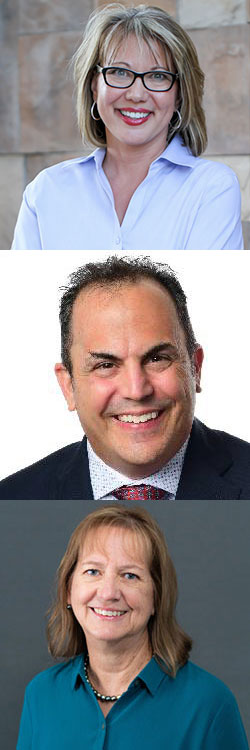 Lee Ann Brady, DMD,
Lee Ann Brady, DMD,
Peter Lemieux, DMD,
Lynn Lipskis, DDS
10:45 am – 12:00 pm
Case Study: Three Perspectives on Your New Patient Monday Morning (Panel Discussion)
Your first hygiene patient next Monday is a 25-year-old female Class II patient who present with pain in the left jaw joint. She reports she had orthodontic treatment from ages 12-16 with headgear and her left joint started clicking when she was 13 years old.
CV Lynn O. Lipskis, D.D.S.
Education:
1981 graduate of Loyola University School of Dentistry (D.D.S.)
1981 established private general dental practice in St. Charles, IL
1982-1993 Associate Clinical Professor, Loyola University School of Dentistry
Member:
American Dental Assoc.; Illinois State Dental Society; Fox River Valley Dental Society; American Academy of Craniofacial Pain (AACP); American Academy of Dental Sleep Medicine (AADSM); Academy of Clinical Sleep Disorders Disciplines (ACSDD); Chicago Dental Society; SOTO; Illinois Sleep Society
Credentials:
Fellow: AACP
Diplomate: ABDSM; ABCP: ABCP Sleep
As a chronic pain sufferer, Dr. Lipskis was determined to find answers and embarked upon a 35+ year journey and over 3000 hours of post graduate continuing education in the areas of facial development; orthodontics; facial orthopedics; craniofacial pain; and sleep medicine .
She has studied extensively with Dr John Witzig, Dr Derek Mahony, and Dr Steven Olmos. Dr. Lipskis was a member of the inaugural class of the AACP’s Institute.
Dr. Lipskis received her Fellowship and Diplomate from The American Board of Craniofacial Pain in 2009. In 2012, she successfully completed the requirements for Diplomate status by the American Board of Dental Sleep Medicine. In 2013, she was granted Diplomate status in Sleep Dentistry by the ABCP.
She has been appointed chair of the ACSDD education committee; has served as a member of the AACP alternative modalities committee. She currently is the Treasurer for the AACP. Dr. Lipskis has given presentations on laser therapy and TMD to various dental organizations locally and internationally, and to the Midwestern University School of Health Professionals in 2009.
Since June 2011, Dr. Lipskis has been concentrating her energies on treating only TMD and sleep patients. Lynn and Ed Lipskis wrote a book in 2019 “Breathe, Sleep, Live, Smile” which outlines their integrative approach to patient health.
In 2017, The TMJ and Sleep Therapy Centre of Chicago moved to a new building to create the current integrative practice with Dr. Ed Lipskis and Dr. Kelly Wells. It is the only practice of its kind in the world. this integrative practice model is the basis for a six-month education program presented by the Drs. Lipskis.
Dr. Lee Ann Brady is a privately practicing dentist and nationally recognized educator, lecturer and author. With an extensive history in leadership, she is currently Executive Director and Director of Education of the Pankey Institute. Dr. Brady has also developed a vast library of online instruction at leeannbrady.com and restorativenation.com. She practices in Glendale Arizona, is a member of the editorial board for the Journal of Cosmetic Dentistry, Inside Dentistry and Dentaltown Magazine.
Dr. Peter Lemieux maintains a comprehensive restorative practice in Winter Park, Florida, with a strong focus on temporomandibular joint diagnosis and treatment utilizing both CBCT and MR imaging. He has been a student of the L. D. Pankey Institute for Advanced Dental Education, Spear Education, the Dawson Academy, and the Piper Education and Research Center.
Dr. Lemieux graduated with honors from the University of Florida College of Dentistry in 1997, and has been recognized with fellowship in the American College of Dentists, the Pierre Fauchard Academy, and the International College of Dentists.
John Kois, DDS, MSD,
Marta Revilla-Leon, DDS, MSD, PhD
2:00 pm – 3:15 pm
Digital Occlusion: What Works and What Doesn’t
Learning Objectives:
1. Transferring the Maxillary Occlusal Plan Based on Natural Head Position
2. Improving the Accuracy of Jaw Relation Records
3. Delivering Restorations Compatible to Mandibular Movements
Dr. Kois received his O.M.D. from the University of Pennsylvania, School of Dental Medicine and Certificate in Periodontal Prosthodontics with a M.S.D. degree from the University of Washington, School of Dentistry. He maintains a private practice limited to Prosthodontics in Tacoma and Seattle and is an Affiliate Professor in the Graduate Restorative Program at the University of Washington. In addition, Dr. Kais works with restorative dentists at the Kois Center, a didactic and clinical teaching program, and continues to lecture nationally and internationally. Dr. Kais is the past President of both the American Academy of Restorative Dentistry and American Academy of Esthetic Dentistry and is a member of numerous other professional organizations. He also serves as a reviewer for many journals and is the co Editor in Chief for The Compendium of Continuing Education in Dentistry. Dr. Kois is the recipient of the 2002 Saul Sch luger Memorial Award for Clinical Excellence in Diagnosis and Treatment.
Additionally, he is the recipient of the 2014 Dr. Thaddeus V. Weclew Award, which is presented annually to a dedicated educator who embodies the spirit of comprehensive dental care.
Dr. Revilla-León is Faculty and the Director of Research and Digital Dentistry at the Kois Center in Seattle and Affiliate Faculty in the Graduate in Prosthodontic Programs at the University of Washington in Seattle and Tufts University in Boston. Dr. Revilla-León obtained her PhD in Prosthodontics and Digital Dentistry at The Academisch Centrum Tandheelkunde (ACTA) University in Amsterdam. She obtained her MSD in Prosthodontics at the University of Washington in Seattle and MS in Esthetic Dentistry at the Complutense University of Madrid.
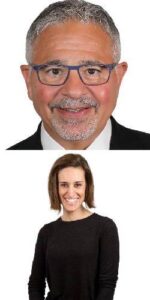 John Kois, DDS, MSD,
John Kois, DDS, MSD,
Marta Revilla-Leon, DDS, MSD, PhD
2:00 pm – 3:15 pm
Digital Occlusion: What Works and What Doesn’t
Learning Objectives:
1. Transferring the Maxillary Occlusal Plan Based on Natural Head Position
2. Improving the Accuracy of Jaw Relation Records
3. Delivering Restorations Compatible to Mandibular Movements
Dr. Kois received his O.M.D. from the University of Pennsylvania, School of Dental Medicine and Certificate in Periodontal Prosthodontics with a M.S.D. degree from the University of Washington, School of Dentistry. He maintains a private practice limited to Prosthodontics in Tacoma and Seattle and is an Affiliate Professor in the Graduate Restorative Program at the University of Washington. In addition, Dr. Kais works with restorative dentists at the Kois Center, a didactic and clinical teaching program, and continues to lecture nationally and internationally. Dr. Kais is the past President of both the American Academy of Restorative Dentistry and American Academy of Esthetic Dentistry and is a member of numerous other professional organizations. He also serves as a reviewer for many journals and is the co Editor in Chief for The Compendium of Continuing Education in Dentistry. Dr. Kois is the recipient of the 2002 Saul Sch luger Memorial Award for Clinical Excellence in Diagnosis and Treatment.
Additionally, he is the recipient of the 2014 Dr. Thaddeus V. Weclew Award, which is presented annually to a dedicated educator who embodies the spirit of comprehensive dental care.
Dr. Revilla-León is Faculty and the Director of Research and Digital Dentistry at the Kois Center in Seattle and Affiliate Faculty in the Graduate in Prosthodontic Programs at the University of Washington in Seattle and Tufts University in Boston. Dr. Revilla-León obtained her PhD in Prosthodontics and Digital Dentistry at The Academisch Centrum Tandheelkunde (ACTA) University in Amsterdam. She obtained her MSD in Prosthodontics at the University of Washington in Seattle and MS in Esthetic Dentistry at the Complutense University of Madrid.
Frank Spear, DDS, MSD
3:45 pm – 5:00 pm
Occlusion – TMD from the Prosthodontist’s Perspective
Synopsis:
For decades the role of occlusion in prosthodontics has been seen as critical to the long-term success of our prosthetic outcomes, and that is still true today. What has changed significantly is the thought process of WHY occlusion matters.
Traditionally occlusion was believed to be responsible for the parafunctional activity of our patients. Fix the occlusion based upon the philosophy you believe in, and you fix the patients excessive muscular behavior, “bad bites equal bad outcomes”.
Today our understanding of the role of occlusion and muscular activity has changed radically compared to the past 50 years. This doesn’t mean that the occlusion is any less important than it has ever been, but WHY it matters may have more to do with managing the forces a patient places on their dentition then on changing their muscular activity by changing their bite.
This presentation will focus on how to diagnose patients where the occlusion is a critical factor in the longevity of the patient’s dentition/restorations, vs the patients who are very predictable to treat regardless of their presenting occlusion.
Recommendations for designing the occlusion in high-risk patients will be covered in detail along with long term clinical examples.
Learning Objectives:
Participants will understand:
• How our understanding of the long-term success of our dentistry is and isn’t related to their occlusion.
• How to recognize the high-risk patient, where managing the occlusion is critical.
• Design options for the occlusion in patients identified as high risk.
Dr. Spear is the founder of Spear Education in Scottsdale Arizona, he earned his dental degree from the University of Washington in 1979, and an MSD in periodontal prosthodontics in 1982, also from the University of Washington.
Dr. Spear has been recognized by numerous associations for his contributions to dentistry. In 1993, he was awarded the Christensen Award for Excellence in Restorative Education from the Chicago Dental Society. In 1995, the American Academy of Cosmetic Dentistry presented him with a special award for having advanced the Art and Science of cosmetic dentistry in the United States. In 1996, he received the Saul Schluger Memorial Award for Excellence in Diagnosis and Treatment Planning from the Seattle Study Club. In 2003 he and colleague Vincent G. Kokich were awarded the first ever Presidents Award for excellence in education from the American Academy of Esthetic Dentistry. He also earned the 2004 Distinguished Alumnus Award from Pacific Lutheran University his undergraduate Alma Mater. And in 2013 was named Distinguished Alumnus for the University of Washington School of Dentistry. In 2018 he received the first ever Charles Pincus – Ronald Goldstein Lifetime Achievement Award in Esthetic Dentistry from the American Academy of Esthetic Dentistry. In 2019 he received the Distinguished lecturer award from the Greater New York Academy of Prosthodontics. In 2023 he was awarded the American Academy of Prosthodontics Gold Medallion Award for his influence on the profession of Prosthodontics.
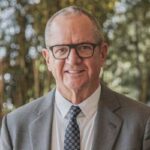 Frank Spear, DDS, MSD
Frank Spear, DDS, MSD
3:45 pm – 5:00 pm
Occlusion – TMD from the Prosthodontist’s Perspective
Synopsis:
For decades the role of occlusion in prosthodontics has been seen as critical to the long-term success of our prosthetic outcomes, and that is still true today. What has changed significantly is the thought process of WHY occlusion matters.
Traditionally occlusion was believed to be responsible for the parafunctional activity of our patients. Fix the occlusion based upon the philosophy you believe in, and you fix the patients excessive muscular behavior, “bad bites equal bad outcomes”.
Today our understanding of the role of occlusion and muscular activity has changed radically compared to the past 50 years. This doesn’t mean that the occlusion is any less important than it has ever been, but WHY it matters may have more to do with managing the forces a patient places on their dentition then on changing their muscular activity by changing their bite.
This presentation will focus on how to diagnose patients where the occlusion is a critical factor in the longevity of the patient’s dentition/restorations, vs the patients who are very predictable to treat regardless of their presenting occlusion.
Recommendations for designing the occlusion in high-risk patients will be covered in detail along with long term clinical examples.
Learning Objectives:
Participants will understand:
• How our understanding of the long-term success of our dentistry is and isn’t related to their occlusion.
• How to recognize the high-risk patient, where managing the occlusion is critical.
• Design options for the occlusion in patients identified as high risk.
Dr. Spear is the founder of Spear Education in Scottsdale Arizona, he earned his dental degree from the University of Washington in 1979, and an MSD in periodontal prosthodontics in 1982, also from the University of Washington.
Dr. Spear has been recognized by numerous associations for his contributions to dentistry. In 1993, he was awarded the Christensen Award for Excellence in Restorative Education from the Chicago Dental Society. In 1995, the American Academy of Cosmetic Dentistry presented him with a special award for having advanced the Art and Science of cosmetic dentistry in the United States. In 1996, he received the Saul Schluger Memorial Award for Excellence in Diagnosis and Treatment Planning from the Seattle Study Club. In 2003 he and colleague Vincent G. Kokich were awarded the first ever Presidents Award for excellence in education from the American Academy of Esthetic Dentistry. He also earned the 2004 Distinguished Alumnus Award from Pacific Lutheran University his undergraduate Alma Mater. And in 2013 was named Distinguished Alumnus for the University of Washington School of Dentistry. In 2018 he received the first ever Charles Pincus – Ronald Goldstein Lifetime Achievement Award in Esthetic Dentistry from the American Academy of Esthetic Dentistry. In 2019 he received the Distinguished lecturer award from the Greater New York Academy of Prosthodontics. In 2023 he was awarded the American Academy of Prosthodontics Gold Medallion Award for his influence on the profession of Prosthodontics.

The AES-Occlusion, TMD, Comprehensive Care is an ADA CERP Recognized Provider. ADA CERP is a service of the American Dental Association to assist dental professionals in identifying quality providers of continuing dental education. ADA CERP does not approve or endorse individual courses or instructors, nor does it imply acceptance of credit hours by boards of dentistry. The AES-Occlusion, TMD, Comprehensive Care designates this activity for 12.5 continuing education credits.
Current term of Recognition May 2021-June 2024.
Concerns or complaints about a CE provider may be directed to the provider or to the Commission for Continuing Education Provider Recognition at ADA.org/CERP.
